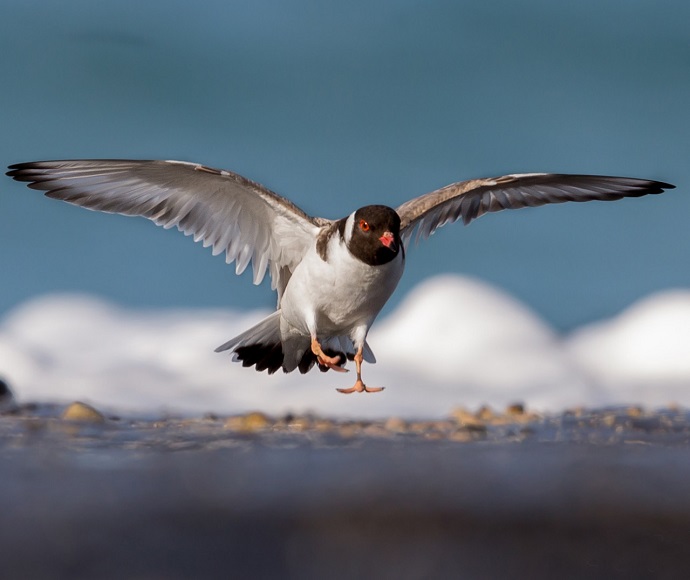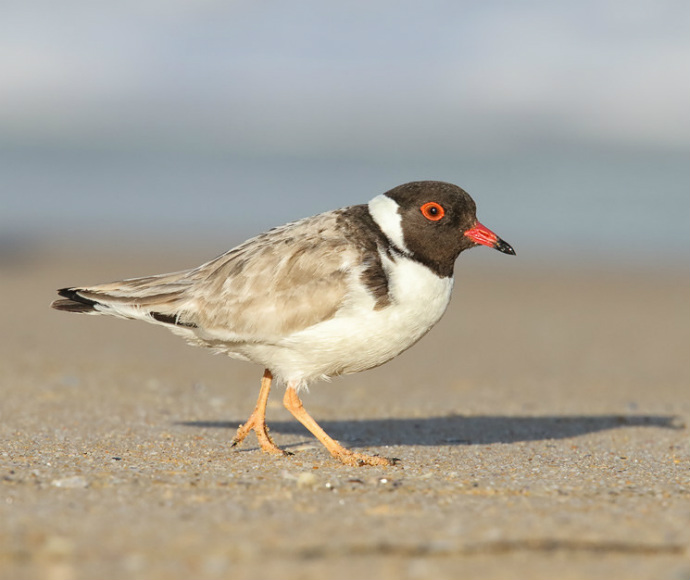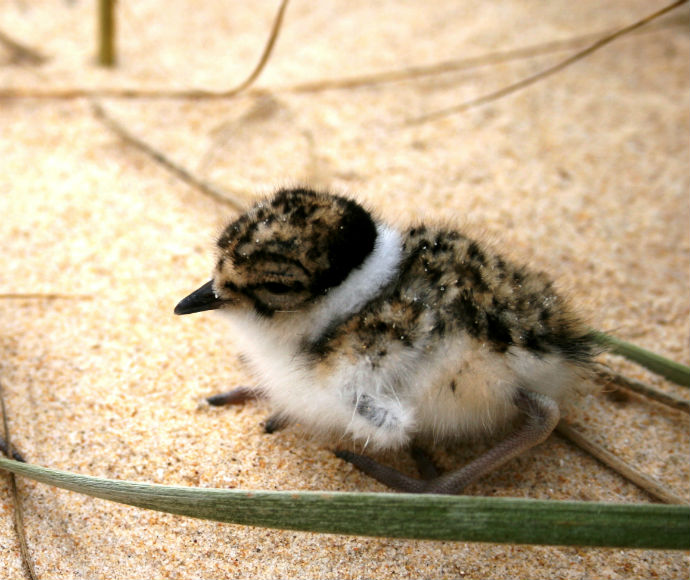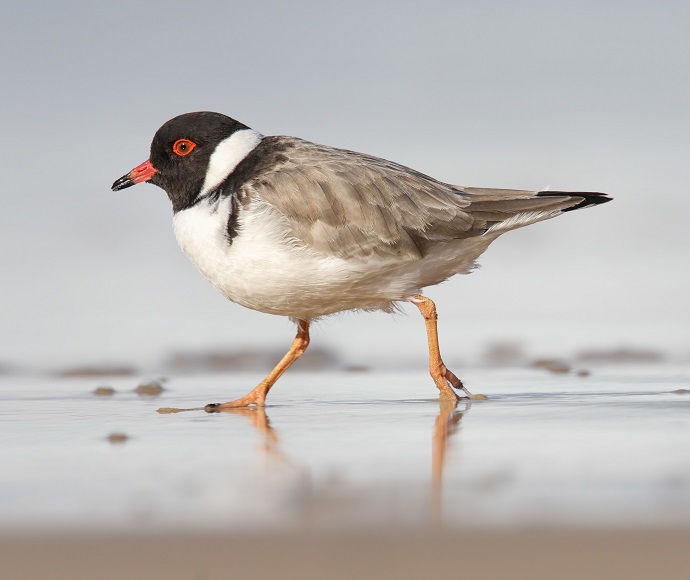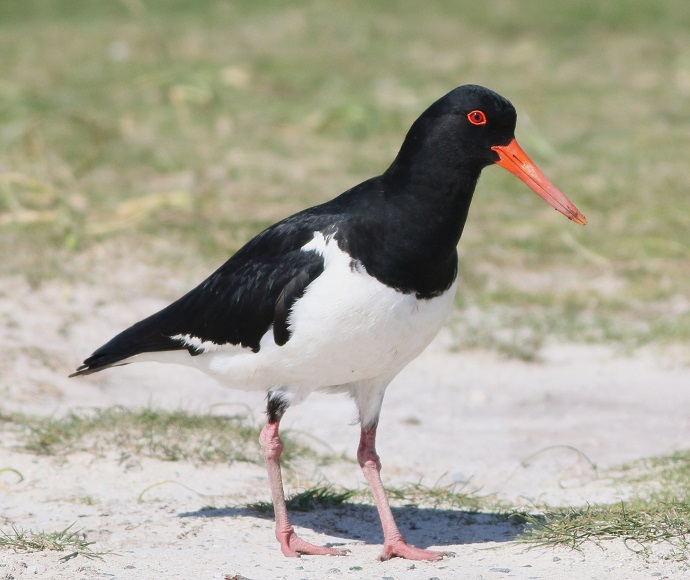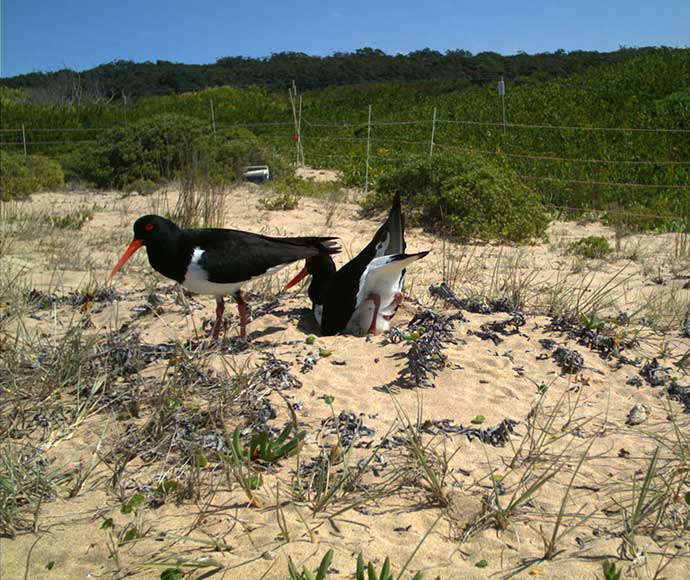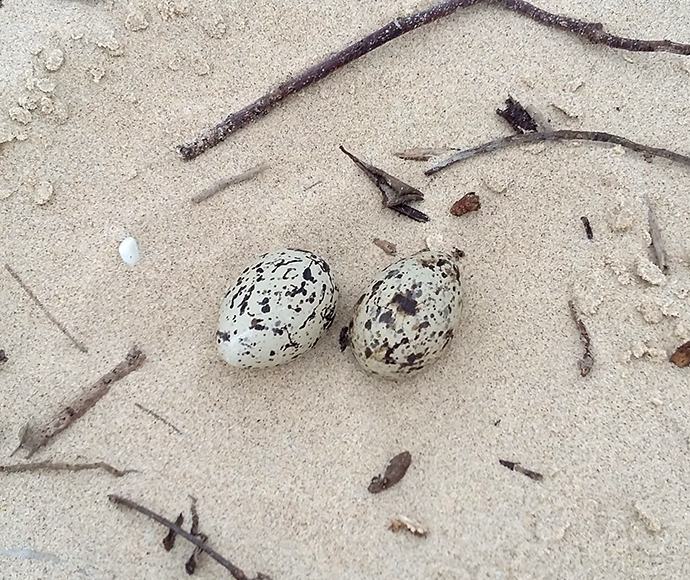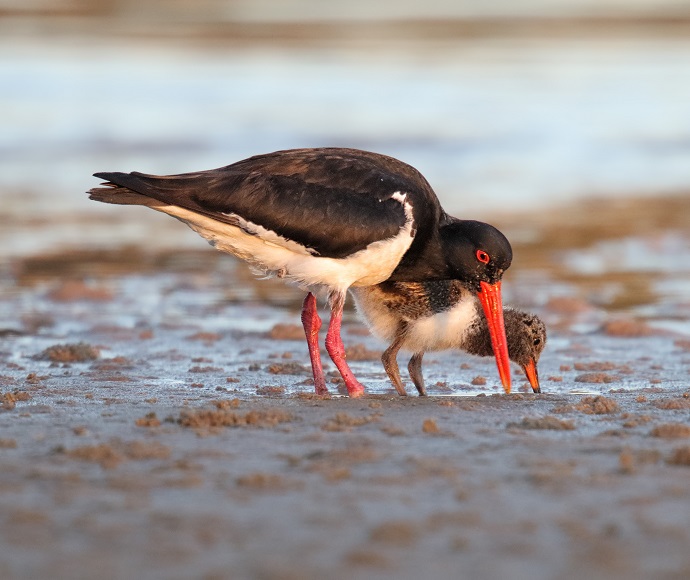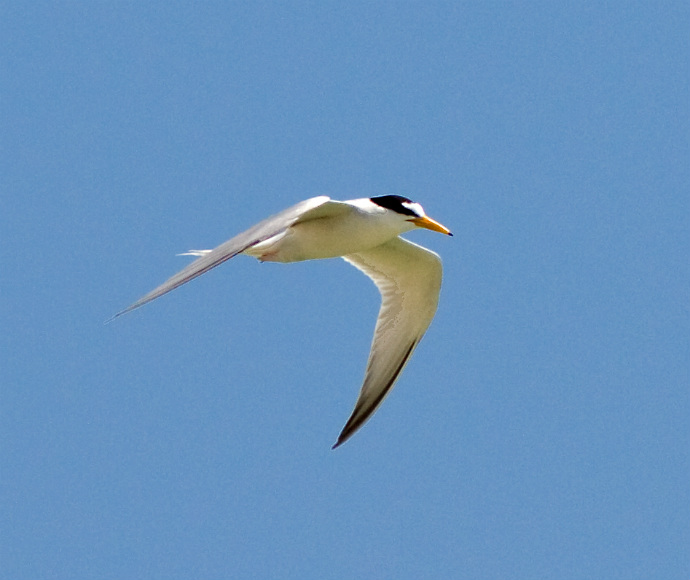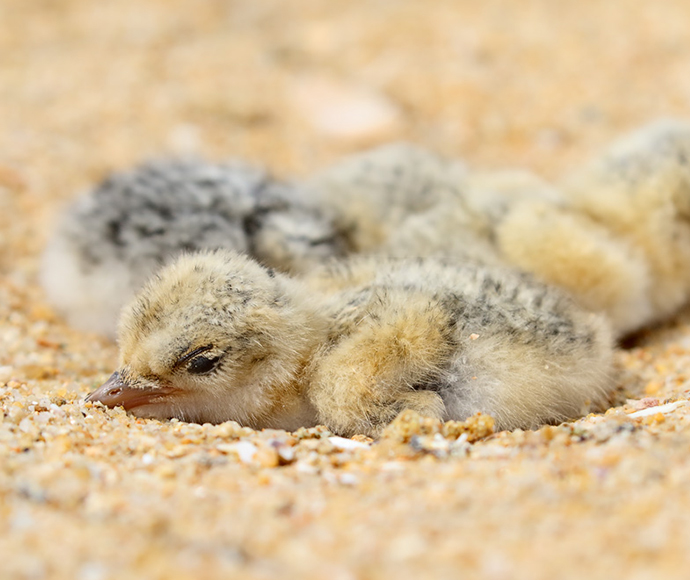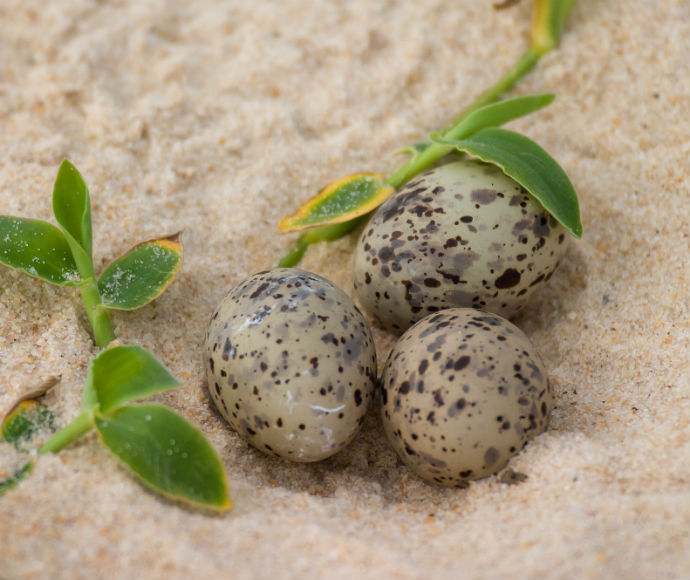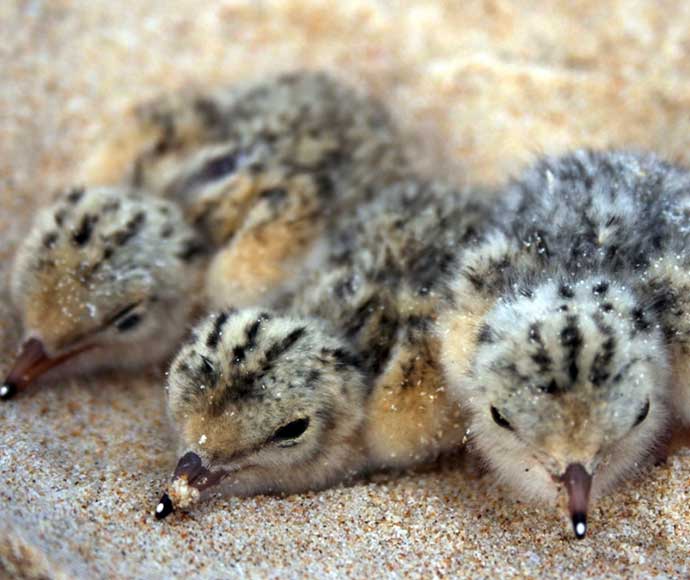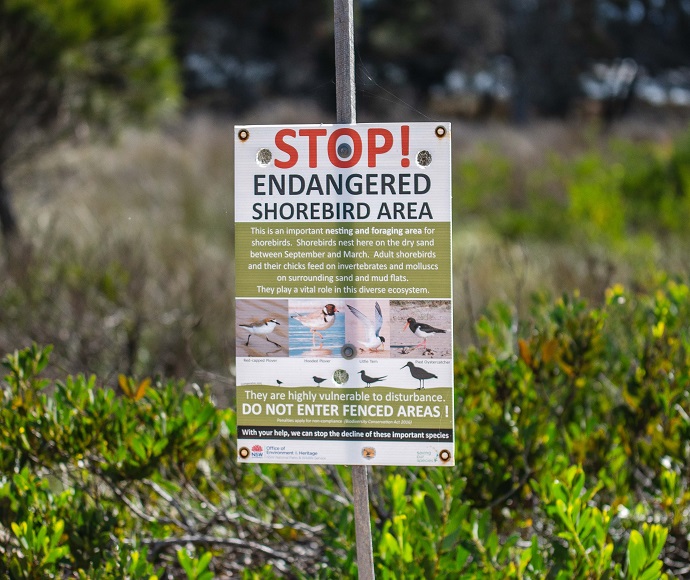Each summer endangered pied oystercatchers and little terns, and critically endangered hooded plovers and beach stone curlews, lay their eggs in shallow nests on our beaches.
These birds nest on our beaches from August to March each year.
Large numbers of people head to the shores in summer, which means the birds are likely to be disturbed. So keep an eye out for these beach-nesting birds, their chicks and eggs when you go to the beach.
Helping endangered shorebirds
Here are 5 small things you can do to help endangered shorebirds raise their chicks on our beaches.
1. Read and respect signage
National Parks and Wildlife Service shorebird officers put temporary signs and fences around nesting areas to protect them and so people know where the birds are. But the birds will also venture outside these fences and roam the beach looking for food. Tread carefully when you’re in their neighbourhood, chicks and eggs are well camouflaged in the sand.
2. Keep your dog on a leash
Even if your dog is not interested in the birds, shorebirds will recognise your dog as a predator and leave their nest in fright or attempt to lead the ‘predator’ away. Parent birds are easily disturbed and can abandon nests.
3. Walk and drive on the wet sand
It isn’t just dogs these birds will recognise as predators – it’s us humans too! Walk on the wet sand to avoid nesting birds, who typically nest in the dry sand areas close to the dunes.
4. Take fishing lines and rubbish with you
Every year we see birds dying from entanglement in fishing line or ingesting rubbish. Take all fishing line and rubbish with you, and pick up any you see on the beach.
5. Give the birds space – share the shore
Take the ‘Share the Shore’ pledge!
Meet the shorebirds
Hooded plover/dotterel
Scientific name: Thinornis cucullatus
Status: Critically endangered
Affectionately known as ‘hoodies’, there are fewer than 70 hooded plovers left in New South Wales. All of them live on the south coast. To nest, they create a small scrape in the sand and typically lay 2 or 3 eggs. They incubate their eggs for around 28 days and share care for their young.
Pied oystercatcher
Scientific name: Haematopus longirostris
Status: Endangered
These distinct and striking birds forage on exposed sand, mud flats and rocky reefs at low tide. Their nests are shallow scrapes in the sand above the high tide mark. They lay 2 or 3 eggs each time they nest.
Little tern
Scientific name: Sternula albifrons
Status: Endangered
These aerodynamic high-fliers migrate from eastern Asia every year. They arrive on our shores around September to nest in shallow scrapes in the sand over summer. Although we can’t control the sort of reception they receive overseas, we can certainly show them some hospitality while they’re here and avoid trampling their nests!
Beach stone-curlew
Scientific name: Esacus magnirostris
Status: Critically endangered
These large waders occur in the northern half of coastal New South Wales. Pairs nest in shallow scrapes in the sand or gravel and only lay one egg, but will re-lay if their first attempt to breed fails. Both parents defend the nest and care for their young, which become independent when they’re around 7–12 months old.
Why shorebirds are threatened
The beach is a busy place to lay your eggs and raise chicks.
Shorebird eggs and chicks are expertly camouflaged, so they’re hard to see and easily trampled. They’re impossible to spot from a vehicle that’s driving on the sand.
The nesting season coincides with the summer holidays and crowds of people flock to south coast beaches. This increases the potential to scare parent birds away from their nest or chicks, which puts the chicks at risk.
Exposed chicks:
- will cook in the hot sun
- freeze in the cold wind
- are easily picked off by opportunistic predators like silver gulls, foxes and cats.
When disturbed, young chicks go into hiding, reducing their ability to forage and learn to feed.
Other ways to help
When walking your dog:
- always leash your dog
- only walk on designated dog beaches
- pay attention to signs, fences and keep dogs away from nesting areas.
When driving your 4-wheel drive:
- only drive on designated beaches
- always drive on the hard sand, below the high tide mark
- avoid driving at high tide.
Watch the video How 4WD users can share the shore with shorebirds to learn more.
When you go fishing:
- clean up and take your tackle and rubbish with you
- avoid pumping for bait on mudflats or beaches in nesting areas or where shorebirds are present.
Watch the video Saving our shorebirds with Starlo to learn more.
When you photograph or observe shorebirds:
- keep your distance
- don’t outstay your welcome
- respect beach closure signs, fences and driving rules
- be aware of your online impact.
Learn more about Sharing the shore – Pro tips on observing and photographing nesting shorebirds.
Get involved with Share the Shore
We want to partner with you! If you’re a local council, community group, organisation or individual and want to contribute to Share the Shore, contact us at [email protected].
Avian influenza
The NSW Government is preparing for a potential wildlife emergency if the dangerous H5N1 strain of avian influenza, which has been impacting birds, seals and sea lions worldwide, reaches Australian shores.
If members of the public or wildlife carers observe:
- 5 or more sick or dead birds of any species, or
- less than 5 wild birds which are seabirds, waterbirds, shorebirds or birds of prey (for example, eagles, hawks), or
- less than 5 sick or dead marine mammals
they are advised to:
- AVOID contact with sick or dead wildlife and their environment
- RECORD what they see, and
- REPORT to the Emergency Animal Disease Hotline on 1800 675 888.
Find out more about avian influenza.
Take the ‘Share the Shore’ pledge
Sign up to receive a package of images, videos and graphics you can share on social media and help us save our precious beach-nesting birds.
The information you provide in this form will only be used for the purpose for which it was collected. By submitting, you consent to storage, use, and disclosure of your personal information in accordance with our privacy policy. You can request access and amendment to your personal information.
Contact us
Saving our Species Program
Email: [email protected]
Stay in touch
- Subscribe to the Saving our Species newsletter.
- Follow us on Facebook, Instagram, YouTube, LinkedIn or X.
- Search the Public register of Saving our Species conservation strategies
